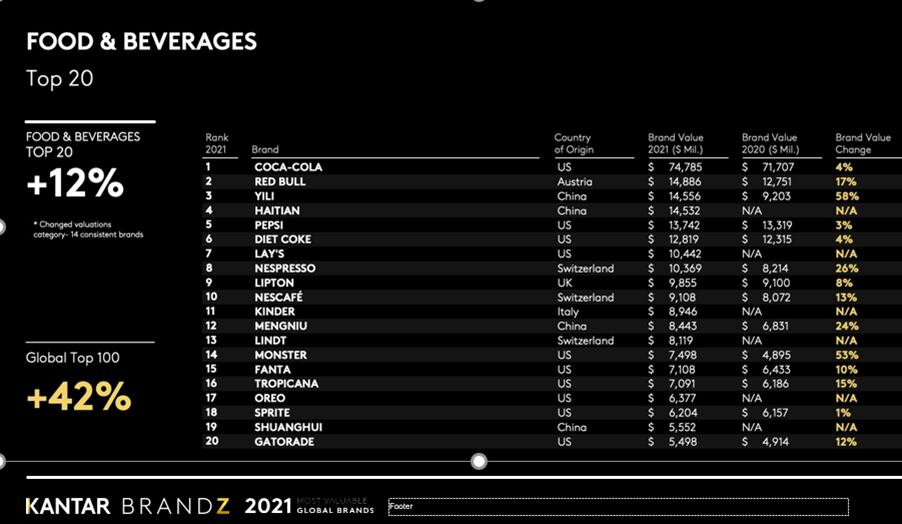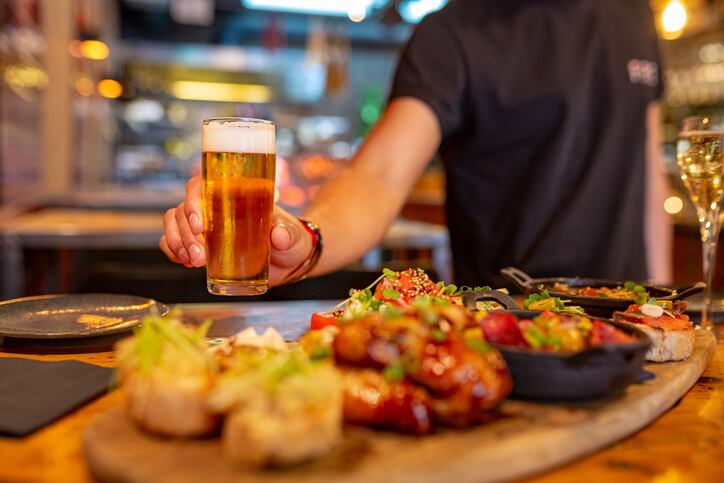Market researcher Kantar has released its list of the world’s most valuable food and drink brands, with beverage brands dominating the top 20 . The research covers 4 million consumer interviews in 512 categories, and 18,500 different brands in 51 markets.
Jane Bloomfield, chief growth officer at Kantar, told FoodNavigator the growing dominance of US and Chinese brands in the global food and beverage space was evident in the report, with just six of the top 20 brands being European.
She added it has been a good year for food and beverage brands, with values increasing 12% overall in the past year.
Meanwhile, with Coca-Cola, Red Bull, Pepsi and Diet Coke riding high in the rankings – and with new entrants including for this year including Lindt and Oreo -- these brands have clearly gained from the swing in consumer behaviour towards indulgence, she told us.
"We know consumers have spent a large proportion of the last year shifting behaviour that we might have typically seen out of home into home. So they have increased their at-home indulgence. With retail we've been very restricted in what we can spend our money on. So what we saw was a lot of that money being transferred into at-home treating, which is where food and beverages have clearly benefitted enormously."

So do brands continue to tailor product development towards a desire among consumers for an indulgent, out-of-home experience in home? Or will behaviours shift again?
"We would expect a little bit of both,” responded Bloomfield. “Some of the behaviours we've begun to develop at home we think will stick. Particularly in something like food and beverages you've seen a big rise in at-home meal kits, restaurant kits and that element of treating yourself at home. Any brand that sits in food and beverage can continue to capitalise on that trend... we’ve seen some good innovation in that space.”
"Overall, in the top 100 we don't expect to see enormous shifts over the next 12 months," she added. "That's partly because restrictions aren't over in lots of countries - so we expect to see that behavior continue. The other reason is that these are enormously successful brands who spend a lot of time and money in building their brand equity and understanding consumers so, therefore, do think about their communication, innovation, experience, and reputation and how responsible they appear to consumers - which are the four pillars we think ar evital to brand growth."
Meanwhile, the trends identified in the report are at odds with reports that the pandemic accelerated consumer interest in health and wellbeing and government attempts to encourage a shift people to healthy eating. For example, the UK government has just outlined to manufacturers its plans to ban junk food TV and online adverts as part of its anti-obesity drive.
“For many consumers these are still very meaningful brands in their lives,” observed Bloomfield. “Brands like MacDonald’s have also done a huge amount to their menus to introduce more healthier choices. The brands themselves are acutely aware of this [regulation] and are responding.”
Meanwhile, globally, the health and wellness trend varies and is not one that exists in every market around the world.
Consumers are also fickle, she said.
Health is “also one of those things that consumers will talk about, but actually, there's a gap between talking about it and the action they take in their everyday lives.”



